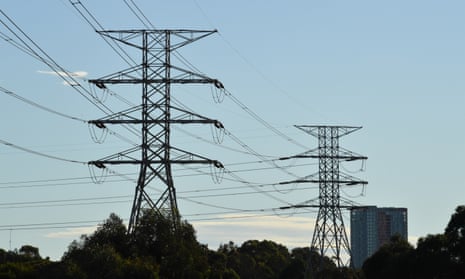Major developed countries including the US, Japan, Britain and the European Union cut greenhouse gas emissions from electricity generation faster than Australia over the past decade, a new report states.
The analysis, in a national energy audit produced by the Australia Institute, is a further challenge to the Morrison government’s claims that the country is doing more to combat the climate crisis than other nations.
Comparing energy combustion emissions between 2011 and 2019, it found that Australia had not managed to achieve the same reductions in electricity emissions as other comparable economies despite solar and wind providing an increasing share of power.
Emissions from other forms of fossil fuel combustion – including for transport and major industrial activity – grew significantly in Australia and the US over that time period but fell in Japan, the UK and EU.
The report found overall emissions from energy combustion emissions had fallen in Australia in the two years since but attributed some of that to the Covid-19 pandemic reducing economic activity.
It reiterated that the emissions cuts from electricity due to the rise in renewable energy had been effectively partly cancelled out by rising emissions from the extraction and processing of liquefied natural gas (LNG) development for export. The emissions from LNG production include leaking methane – a particularly potent greenhouse gas.
The report found renewable generation exceeded 30% of generation in the national electricity market in the 12 months to July this year. It was the first time it had reached this benchmark.
Richie Merzian, the Australia Institute’s climate and energy program director, said it was “a good milestone to reach”. But he said it was “still not up there with other similar countries in terms of how impressive it is”.
“As a share of clean energy, Australia is more in the middle of the pack,” he said.
Merzian said Australia had more work to do to cut its emissions from other sources. He said methane was a significant problem and had been highlighted as “low hanging fruit” that should be quickly addressed in a recent landmark report by the Intergovernmental Panel on Climate Change.
The report’s finding that emissions from all other types of energy combustion rose was consistent with other analyses that have shown that Australia’s overall fossil fuel emissions have barely dipped since 2005 – the benchmark year for targets submitted to the UN as part of the Paris agreement.
The most recent national greenhouse gas accounts show emissions are down 20.8% since that year. The Morrison government said this demonstrated that Australia was reducing emissions more rapidly than many comparable countries.
But the overwhelming bulk of this decline is due to changes in land use and forestry that had little to do with federal climate or environmental policy, and the impact of the pandemic. If land use and forestry are excluded, emissions from the rest of the economy – electricity, big industry, transport, agriculture and waste – fell by only 2.9% between 2005 and early 2021.
The Australia Institute report highlights the need to drastically cut transport emissions in Australia, where the emissions intensity of new vehicles remains above the OECD average due to the larger than average vehicle size and a lack of national policy measures to encourage the purchase of electric and low emissions vehicles.
Quick GuideHow to get the latest news from Guardian Australia
Show

Email: sign up for our daily morning and afternoon email newsletters
App: download our free app and never miss the biggest stories
Social: follow us on YouTube, TikTok, Instagram, Facebook or Twitter
Podcast: listen to our daily episodes on Apple Podcasts, Spotify or search "Full Story" in your favourite app
Hugh Saddler, the audit’s author and an honorary associate professor at the ANU Crawford School of Public Policy, said Australia’s uptake of electric vehicles was trailing the rest of the world. The audit found in 2020, electric vehicles, including both battery and plug-in hybrid, accounted for 0.39% of total new light vehicle sales.
“In the electricity sector a lot of the other high income developed countries started the transition toward renewable energy much earlier than Australia,” Saddler said.
“We seem to be doing the same thing with electric vehicles. We’re just making the same mistakes in starting too late and sitting on our hands in terms of the national government. The state governments have started doing things but the national government is not doing anything at all.”
Comment has been sought from the federal emissions reduction minister, Angus Taylor.
